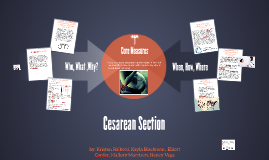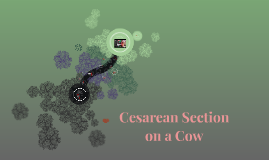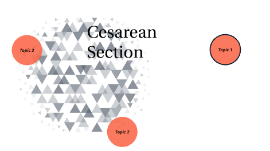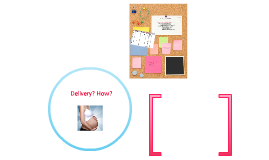Cesarean Section
Transcript: Who, What ,Why? When, How, Where Who Actually Mandates these Core Measures? Purpose of Core Measure THANK YOU! Martin McCaffrey, MD Associate Professor Division of Neonatal-Perinatal Medicine UNC North Carolina Children’s Hospital Newborn Critical Care Center Janet H. Muri, MBA President National Perinatal Information Center/ Quality Analytic Services Patrick Romano, MD, MPH, FACP, FAAP Professor of Medicine and Pediatrics UC Davis School of Medicine, center for healthcare Policy Research Mark Tomlinson, MD Regional Obstetric Medical Director Providence Health System -The data is collected every time there is a live nulliparous term singleton vertex delivery (first time moms with single baby who is head down at term). -Indicator= Nulliparous, term singleton vertex cesarean births / All live nulliparous term singleton vertex delieveries WHERE these measure(s) must be in place In 2008 the National Quality Forum launched a perinatal care project in which incuded the "National Voluntary Consensus Standards for Perinatal Care." This Consensus listed 17 measures which included Cesarean section's rates in low-risk mothers. These measures were reviewed by the Joint Commision the same year and 5 of the measures were adopted as Core measures including the C-section rates. Those core measures were ready for hospital use by late 2009 and data was collected by early 2010. By late 2012 the Joint Commission made that set of perinatal core measures mandatory for hospitals. Dekker, R. (2013, January 23). U.S. Hospitals Held Accountable for C-Section Rates ImprovingBirth. Retrieved November 4, 2015. First-Birth Term Cesareans. (n.d.). Retrieved November 3, 2015. from http://health.usf.edu/Nr/rdoniyres/7D7FD0FF. Lennon, J., & Seaver, D. (2014). A Collaborative Practice Initiative to Reduce the Rate of Cesarean Deliveries: The Vaginal Delivery Optimization Team. JOGNN: Journal Of Obstetric, Gynecologic & Neonatal Nursing, 43(Supp 1), S20-1 1p. doi:10.1111/1552-6909.12413 Lowdermilk, D. (n.d.). Maternity & women's health care (11th ed.). National Voluntary Consensus Standards for Perinatal Care 2008. (2009). Vi-1. from http://www.qualityforum.org/Publications/2009/05/National_Voluntary_Consensus_Standards_for_Perinatal_Care_2008.aspx Packer-Tursman, J. (2015). What's working to lower the primary cesarean rate?. Contemporary OB/GYN, 60(4), 36-39 4p QUESTIONS AND ANSWERS: The Perinatal Care Core Measure Set. (2013). How Does The Joint Commission Use Information about Accountability Measures?, 33(11), 12-14. Retrieved November 4, 2015, from http://www.jointcommission.org/assets/1/6/S11.pdf To decrease the skyrocketing rates To improve performance To decrease adverse outcomes associated with cesarian delivery such as: Infection Longer Hospital Stay Increased Maternal Morbidity Prolonged Pain Blood Clots Adhesions Hemorrhage Emergency Hysterectomy (rare) Increase in ceasearean deliveries caused an increase in accreta. Placenta accreta- placenta grows too deeply into uterine wall, therefore it may not all come out after delivery. It is the primary cause of emergency hysterectomy Placenta accreta may cause: Massive Hemmorhage Heavy Bleeding Premature Birth C-Section rates have increased due to induction of labor. South Carolina BlueSheild BlueCross focus: Education Practice guidelines Safe ways to manage births -Exclusion: Multiple gestations, less than 8 years of age, greater than or equal to 65 years of age, length of stay > than 120 days, enrolled in clinical trial, and gestational age less than 37 weeks or unable to determine (First-Birth). There is no true "punishment" if the core measurement is not met. The hospital will not loose it's accreditation because there is no specific set rate that every hospital has to reduce their number of cesarean sections too. The goal of the cesarean section core measurement is to reduce the number of c-section rates according to what the hospitals rates are normally for c-sections. This core measure is a way to put pressure on the hospitals and encourage them to monitor, report, and evaluate their cesarean section rates. In late 2007, The Joint Commission’s Board of Commissioners recommended retiring and replacing the Pregnancy and Related Conditions (PR) measure set with an expanded set of evidenced-based measures (PC). Such as the one we are looking at today! "Perinatal Care- 02 - Cesarian section" or (pc-02) Was started and first researched by the the "California Maternal Quality Care Collabrative". Cesarean Section by: Kristen Balboni, Kayla Blackmon, Elliott Corder, Mallory Morrison, Nancy Vega Michael Ross, MD, MPH (Chair) Professor of Ob/Gyn and Public Health Geffen School of Medicine at UCLA and UCLA School of Public Health Debra Bingham, DrPH, RN, LCCE Vice President of Research, Education, and Publications Association of Women's Health, Obstetric & Neonatal Nurses (AWHONN) Steven L. Clark, MD Professor Baylor College of Medicine, Texas Children’s Hospital James T. Christmas, MD Medical

















